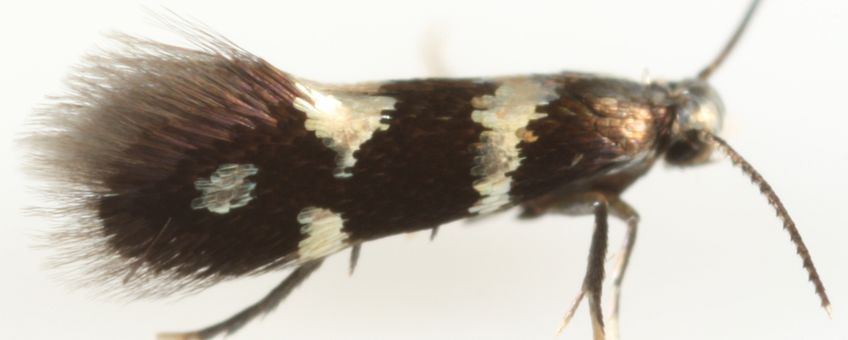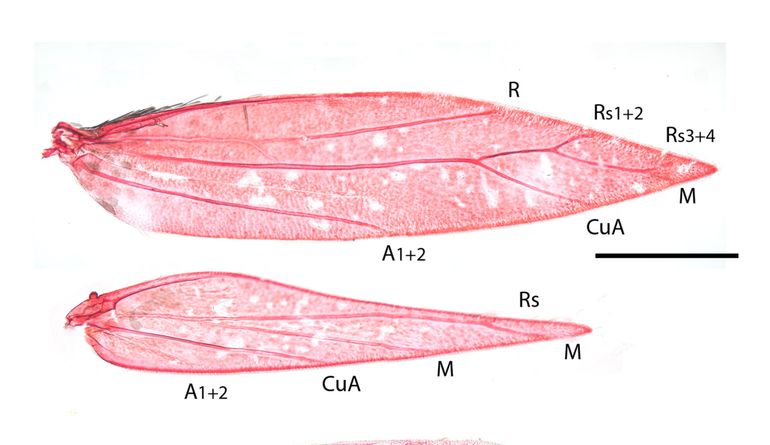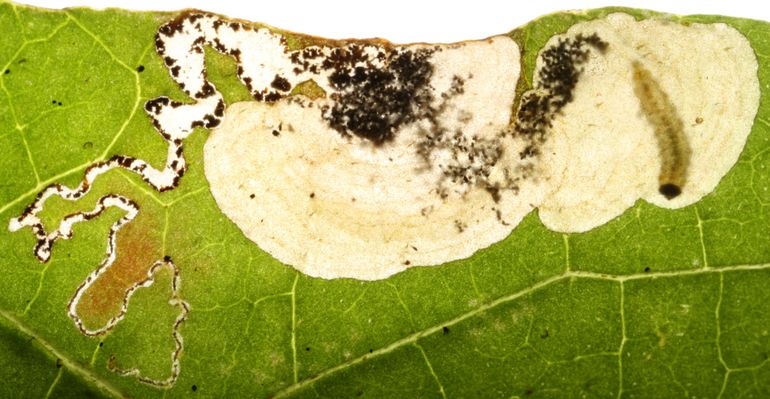
Invasive grapevine leafminer needs to change name to show its evolutionary relationships
Naturalis Biodiversity CenterOur knowledge of relationships of animals has been drastically changed since we began using DNA to study these relationships. This often explains the need for changing names, as is the case here. The new change involves tiny moths that were traditionally placed together on the basis of the colour pattern of silver spots on a dark background. The placement of two spots at both sides of the forewing led to the name 'Antispila', which in Greek means opposing spots.
From Antispila to Aspilanta
Recent DNA studies have shown that a group of North American species in Antispila are evolutionarily not closely related to other Antispila species. Not only do they share some DNA characters, but they also have a reduced venation in the forewings and most species have an extra silver spot in the forewing apex. Furthermore, the pupal cases that the larvae construct lack the prominent central ridge that is characteristic of Antispila.

For these species entomologist Erik van Nieukerken, research associate at Naturalis Biodiversity Center (Leiden, Netherlands), and Charles Eiseman, a naturalist from Massachusetts specializing in North American leafminers, erected a new genus, coined Aspilanta, more or less an anagram of the name Antispila. This genus consists of six species of small moths, with forewing lengths between 1.8 and 2.8 millimetre. The larvae of four species make characteristic tunnels in the leaves of grapevine and Virginia creeper, one species in wild hydrangea and one in sweetgale, bayberry and sweetfern. As with all leaf-mining moths in the family Heliozelidae, the full-grown larva constructs a pupal case by cutting out an oval piece from its completed leaf mine.
Among the four species feeding on grape and Virginia creeper is the invasive grapevine leafminer, only in 2012 described as Antispila oinophylla. Its name from now on will be Aspilanta oinophylla. The species was accidentally introduced in Italy in this century, and is still spreading there.
Although the change of a name of an economically important species can be seen as cumbersome and unwanted, it is necessary as it will make it easier to understand the biological properties of the species that relate to its evolutionary history.
For all species diagnoses are included, and new data on biology, distribution and DNA barcodes are provided, also for parasitic wasps that were reared from the caterpillars. All records and observations are simultaneously published on the online platform of the Global Biodiversity Information Facility (GBIF) and the DNA barcodes on the Barcode of Life Datasystems.
More information
- Article Splitting the leafmining shield-bearer moth genus Antispila Hübner (Lepidoptera: Heliozelidae): North American species with reduced venation placed in Aspilanta new genus, with a review of heliozelid morphology
- GBIF occurrence dataset
- BOLD dataset moths (DNA barcodes
- BOLD dataset parasites (DNA barcodes)
Text: Erik van Nieukerken, Naturalis Biodiversity Center and Charles Eiseman
Photos: Charles Eiseman (lead photo: Aspilanta ampelopsifoliella, female, Pelham MA. Note the characteristic spot in the wing tip); Erik van Nieukerken


